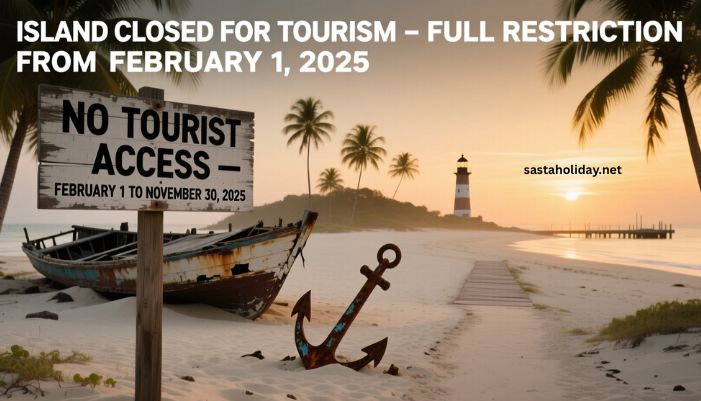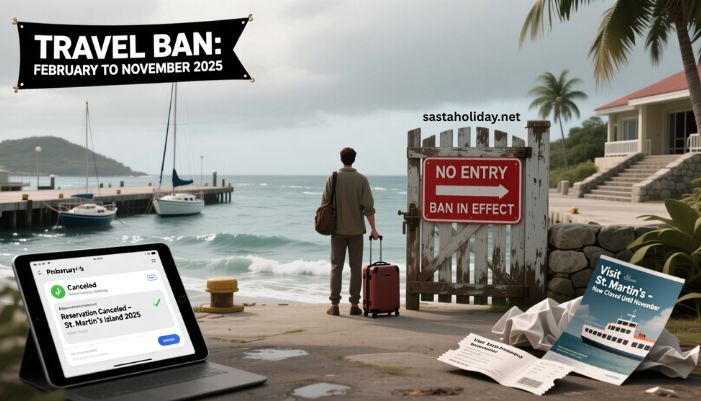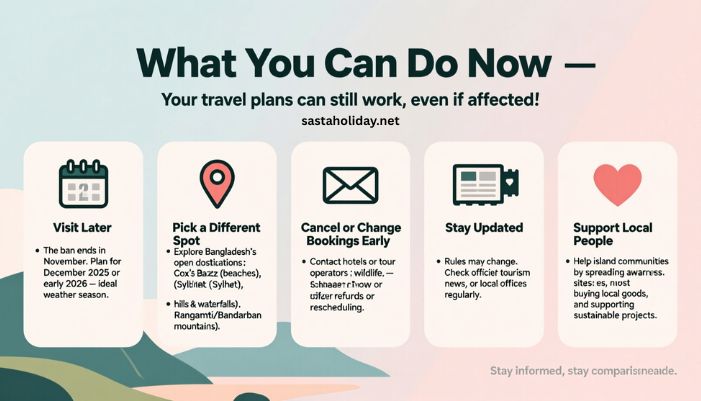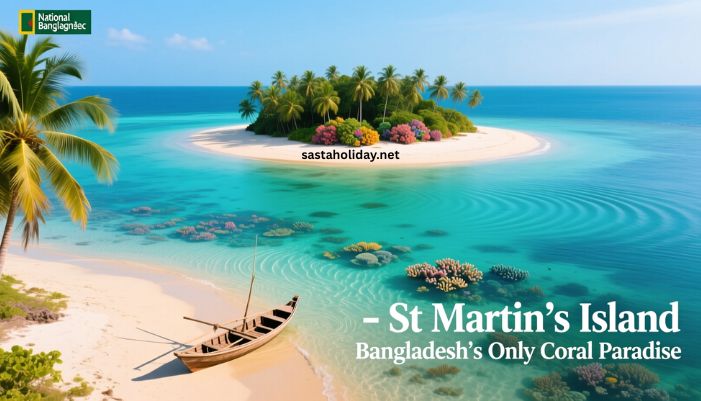Planning a trip to St Martin’s Island? You’ll need to wait.
Bangladesh has stopped all tourist travel to St Martin’s Island for nine months in 2025. The ban starts on February 1 and ends in November.
The reason? The government wants to protect the island’s environment.
If you already made plans or just wanted to visit, this guide will help you understand what to do next.
What Is St Martin’s Island?
St Martin’s Island is the only coral island in Bangladesh.
It’s small but beautiful. You’ll find clear blue water, coral reefs, coconut trees, and sandy beaches.
The island is in the Bay of Bengal, near Teknaf, the southernmost point of mainland Bangladesh.
Many people visit between October and March, which is the dry season.
What Is the Travel Ban?

The travel ban stops all tourists from visiting the island from February 1 to November 30, 2025.
Here’s what that means:
- No boats or ships will take tourists to the island
- No hotels or guesthouses will host visitors
- No one can stay overnight during the ban
- This applies to local and foreign tourists
Even before February, rules were strict.
- In November 2024, overnight stays were not allowed
- In December and January, only 2,000 people per night could stay
Once February begins, all tourist travel stops completely.
Why Did the Government Ban Travel?
The ban aims to save the island’s natural beauty.
St Martin’s is fragile. Too many people visit. That hurts the environment.
Here’s what happens when too many tourists come:
- Coral reefs break
- Trash builds up
- Sea life suffers
- Water and air get polluted
The island is home to many species. Some are rare and endangered. The government wants to protect them.
A report from the Department of Environment showed damage is getting worse each year. Officials say they must act now.
How the Ban Affects You

If you planned to visit St Martin’s in 2025, you’ll need to change your plans.
You can’t go to the island at all between February and November.
Here’s what you need to do:
- Cancel your bookings for hotels or tours
- Change your travel dates if you still want to visit later
- Check ferry or ship tickets and ask for refunds
- Follow updates from the government for any new rules
If you try to go during the ban, you won’t be allowed to enter. Ships and local ports will turn tourists away.
What About the Local People?
The ban doesn’t just affect tourists.
It’s a big problem for people who live on the island. Most of them make money from tourism.
They work in:
- Hotels and restaurants
- Tour boats and ferries
- Local shops and markets
- Transport and travel services
Many locals fear losing their income. They say nine months is too long. Some asked the government to delay the ban or make it shorter.
Business owners say they need at least four months of tourist season to survive the year.
Without that, they won’t earn enough to feed their families.
So far, the government has not shared a full support plan for locals.
What You Can Do Now

You have options even if your trip is affected.
1. Visit Later
The ban ends in November. You can plan your trip for December 2025 or early 2026.
That’s when the island usually has great weather.
2. Pick a Different Spot
Bangladesh has other places to visit:
- Cox’s Bazar for beaches
- Sundarbans for nature and wildlife
- Sylhet for hills and waterfalls
- Rangamati or Bandarban for mountains
These places are open and offer great experiences.
3. Cancel or Change Bookings Early
Contact your hotel or tour company now. Most businesses will give a refund or help you reschedule.
4. Stay Updated
Government rules may change. Check websites, news, or tourism offices for updates.
5. Support Local People
If you care about the island, consider helping the people who live there.
You can:
- Spread awareness
- Buy local products
- Support projects that help islanders
Why St Martin’s Needs Protection
The island’s ecosystem is at risk. Here’s why:
- Coral reefs are dying due to pollution and damage
- Fish and marine life are disappearing
- Plastic waste is everywhere, including on the beach and in the sea
- Trees are being cut, and land is overused
Tourism has grown fast. But without rules, it has hurt the island.
Experts say the island needs time to heal. A long break from tourists helps nature recover.
Will the Ban Happen Every Year?
Right now, the ban is for 2025 only. But the government may make changes later.
They may:
- Limit tourist numbers
- Allow visits for part of the year only
- Make rules for safe tourism
If the island recovers well, they may open it again for longer seasons.
What to Expect in the Future
This travel ban is part of a bigger plan. The government wants sustainable tourism. That means travel that does not harm nature.
Future rules may include:
- Daily limits on visitors
- Eco-friendly hotels only
- No plastic use
- More security and monitoring
Tourists may also need permits or advance booking.
This could make trips safer and more enjoyable for everyone.
FAQ
Q: Can I visit St Martin’s in December 2025?
Yes. The ban ends in November. You can go in December.
Q: Are foreign tourists banned too?
Yes. The ban includes all tourists, no matter where they come from.
Q: Why not just limit the number of tourists instead of banning all visits?
The government says earlier limits didn’t work. People still overcrowded the island.
Q: Is there any help for island residents?
Not yet. Local people are asking for support, but no official plan has been shared.
Q: Are other places in Bangladesh open to visit?
Yes. Only St Martin’s Island is closed. Other tourist spots are open as usual.
Final Thoughts
St Martin’s Island is a rare and beautiful place. But too much tourism has hurt it.
The ban is hard for tourists and locals. But it gives the island a chance to rest and recover.
If you planned to go this year, make new plans. Travel later. Explore other places. Stay informed.
And when the island opens again, visit with care. Keep it clean. Respect the rules. Let nature stay safe for the future.


